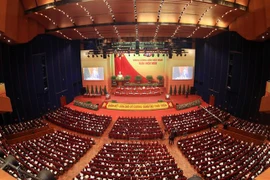Vietnam’s working class, though accounting for about14 percent of the country’s population and 27 percent of the workforce, producesmore than 65 percent of all products and generates more than 70 percent ofState budget collections, noted Khang, who is also a member of the PartyCentral Committee.
He proposed that the Politburo approve a project to reformthe Vietnam Trade Union’s organisation and operation in the new era, thuslaying the foundation for the issuance of a resolution in the field.
Khang also suggested the institutionalisation of Partyviewpoints and policies regarding trade unions, the working class, and workers,while creating a smooth legal corridor to protect workers and promote the roleof trade unions and the working class in national construction and defence.
She pointed to four major issues, including housing support for migrantwoman workers, social welfare for nursing women, and employment opportunitiesfor women.
Ha noted that about 80 percent of workers are currentlyfacing difficulties in housing, while only 30 percent of the women in theforking force enjoy a maternity allowance. According to the General StatisticsOffice, maternal deaths among women from ethnic minority groups were four timeshigher than that among the majority Kinh women in 2019.
An important force of the country and 50.23 percent ofits population, women still face difficulties in accessing social welfarepolicies and employment opportunities, she noted, adding that about 80 percentof female workers of working age are untrained and bear a heavy burden at home.
Ha proposed that the Party and State include gender factorsin policies for sectors, in line with the Law on Gender Equality, thus providingbetter support to women./.





























